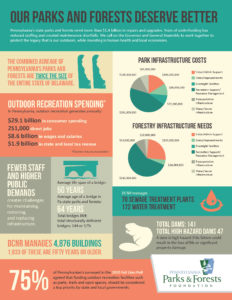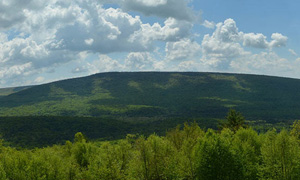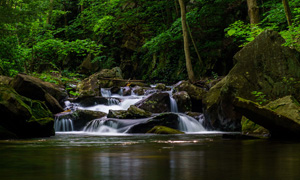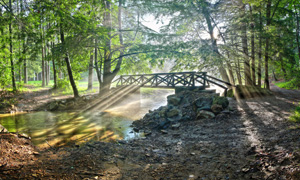 The Foundation has created an entire website devoted to the economic benefits of the outdoors (ProtectOurParksandForests.org) and the need for continued and increased investment in our parks and forests and provides opportunities for private investment in the infrastructure and maintenance requirements of these places through our Needs List.
The Foundation has created an entire website devoted to the economic benefits of the outdoors (ProtectOurParksandForests.org) and the need for continued and increased investment in our parks and forests and provides opportunities for private investment in the infrastructure and maintenance requirements of these places through our Needs List.
Well-cared for public spaces benefits the communities they surround. Learn more about the specific relationship between the outdoors and thriving communities in our 2021 video visit to Jim Thorpe.
In early 2015, the Richard King Mellon Foundation supported our idea to explore the “Gateway Community” concept as it would relate to our state parks and forests. (See our fact sheet for additional information.)
Simply put, a gateway community is any community next to public lands. It is a “gateway” to the resource by virtue of its location but a gateway community is also a branding mechanism. Many in a community already recognize the value and the natural mutual goal – parks and forests wants visitors. Town businesses want customers. Residents benefit as a result of having the park and forest nearby and property values increase. Anything that gives a visitor something else to do and see is another reason for him or her to stay a little while longer, spending money and spreading the word about the fun they’re having and the beauty they’re experiencing. The goal of the Gateway Community Initiative is to make sure the state parks and forests and the communities that are the “gateway” to them form an unbreakable partnership for the benefit of both.
Our pilot community is Ligonier, gateway to Forbes State Forest, Linn Run State Park, Laurel Mountain State Park and, indeed, the entirety of the beautiful region known as the Laurel Highlands. A Community Action Team, led by our facilitator and consultant Cathy McCollom of McCollom Development Strategies, with members from the local chamber of commerce; visitors bureau; township and borough government; and business, community, and nonprofit leaders came together to assess the connections that exist and those that can be improved.
As a result, the Action Team:
Assessed the community through the eyes of a new visitor * Created and installed new signage and an informational kiosk * Shared promotion on websites and other marketing pieces * Developed a “rain and shine” walking tour brochure, area reference map, and mobile app (Tagalong Tour of the Ligonier Valley) * Hosted an open house at Linn Run for business and community leaders and the public * Created an infographic/rack card outlining the economic benefits of the outdoors to Pennsylvania (and the US)
Ligonier is just the beginning! If you would like to discuss how your community might become the next Gateway, our process overview document and Needs Assessment document might just be the place to start. Contact Marci and let’s explore the possibilities.
Check out the companion process to become an Outdoor Town.
(A longstanding method for thinking regionally is the Conservation Landscape Initiative project, begun in 2004. A 2019 study looked at the success of this idea. Read Pennsylvania Conservation Landscapes: Models of Successful Collaboration.)
The Conservation & Natural Resources Advisory Council conducted a “CNRAC Conversation” on November 5, 2021 on the issue of the relationship between outdoors resources and the economy. Check out the video.




